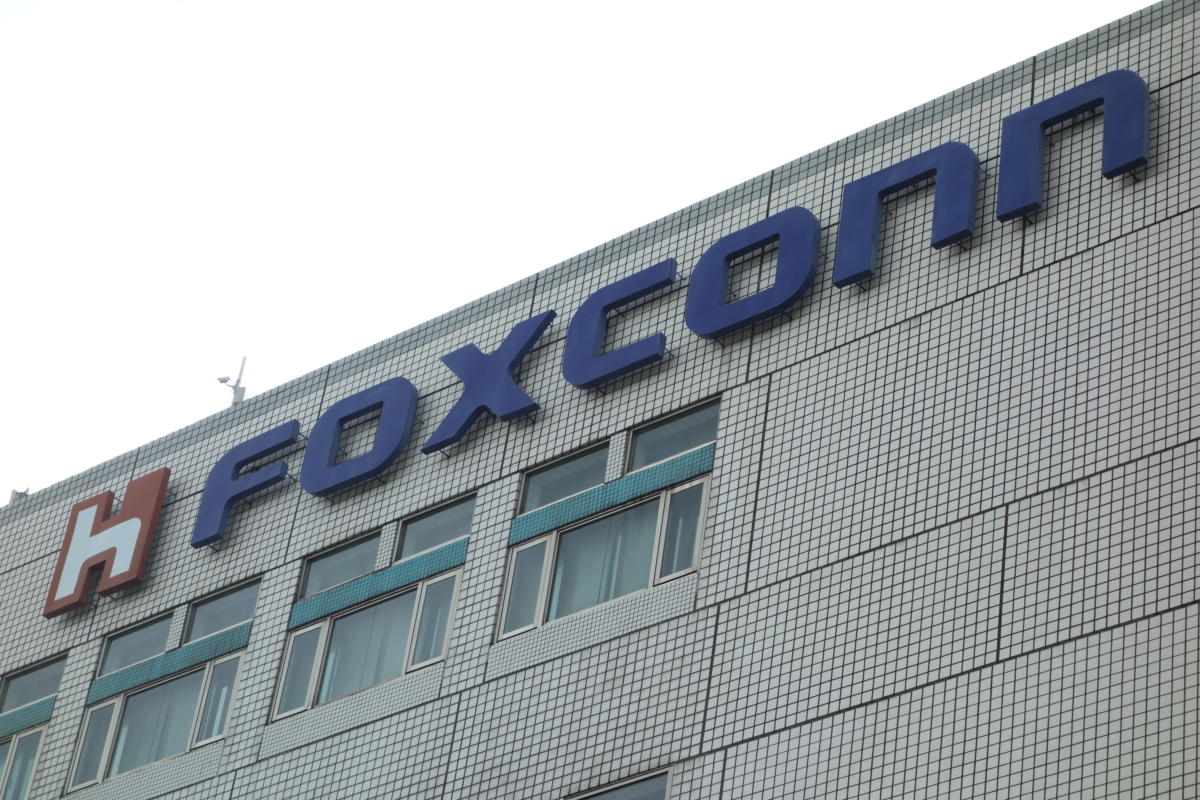Some of the world’s largest tech manufacturers have temporarily shuttered operations in China amid government lock downs in multiple provinces and cities meant to stem the spread of a COVID-19 outbreak.
As part of its zero-tolerance goal to suppress COVID-19’s spread, the Chinese government ordered lockdowns in several places, including Shanghai and Shenzhen, a major container port and tech hub. Residents in cities under lockdown can only leave their homes for essential reasons.
Foxconn, the world's biggest contract electronics manufacturer and Apple’s largest iPhone supplier, said in a statement today it will suspend production at its Longhua and Guanlan factories in Shenzhen. Those factories will remain closed “until further notice from the local government.
“Due to our diversified production sites in China, we have adjusted the production line to minimize the potential impact," the company said in a statement provided to "China Daily."
China is in the midst of its largest coronavirus surge since the start of the pandemic due to an arrival of the Omicron variant. The lockdown in Shenzhen is scheduled to last six days.
“[Shenzhen] is like the Silicon Valley of China where there are many tech suppliers for other tech giants as well,” said Alla Valente, a senior analyst for research firm Forrester. “This is another setback for supply chains.”
Along with Foxconn, about 30 Taiwanese companies announced production stoppages at factories in the Shenzhen, which is located along the northern border of Hong Kong. Those manufacturers make everything from circuit boards to touchscreen modules.
Along with being a major tech manufacturing center, Shenzhen is a base of operations for major companies such as Huawei, Oppo, Tencent, and TCL. The shutdowns are likely to exacerbate an already hobbled global supply chain struggling with an ongoing semi-conductor chip shortage and container ship bottlenecks.
For Apple, the Foxconn production suspension comes at a particularly bad time; the company just last week announced a number of products, ranging from a new Mac Studio desktop and display, a new iPhone SE, iPad Air, and new iPhone 13 and iPhone 13 Pro colors. The Shenzhen plants also produce the iPhone 13 models.
“Given that supply is already constrained, even at Apple…, shutdowns are never a good thing,” said Jack Gold, principal analyst at research firm J. Gold Associates. “It depends on how long the plants remain shut down to know if there will be mild or severe disruptions in the supply of products.”
There is already a move by many tech companies to diversify outside of China. For example, Intel has announced it is building new chip foundries in Ohio and Arizona.
The concentration of manufacturing in one country is problematic for many reasons — political and physical (e.g., storms, power disruptions, pandemics), according to Gold. But it’s also not so easy to just pick up and move production.
“It takes time to do so — finding contractors, establishing production facilities, getting up to speed on products, extending the supply chain to new factories, etc. So, while there is a move on to do this, the bulk of manufacturing will remain at Foxconn for some time,” Gold said.
This is not the first time China has locked down cities due to COVID-19, hampering technology production. In February 2020, China locked down dozens of cities, including Shenzhen, in response to the initial outbreak. In March 2020, the country again locked down certain cities to stem the spread of the virus.
The current situation, however, is dramatically different than those earlier lockdowns because much of the rest of the world was also suspending its manufacturing operations amid the pandemic.
“Where we are now is quite different. Many parts of world are re-opened,” Valente said. “Consumers are spending as much, if not more, than they did pre-pandemic — not to mention we’ve been struggling with supply chain fragility issues for coming on two years now.”
With companies now allowing employees to work from home, personal desktops and laptops, cameras for video conferencing and communications technology are all at a premium.
The Port of Shenzhen, located on the Pearl River estuary, is the world's fourth busiest container port. In May 2021, the port announced it wouldn’t accept new export containers because of a COVID-19 outbreak. The head of container shipping giant Maersk said at the time the port shutdown was worse than a vessel that had run aground in the Suez Canal in March, blocking shipments for six days.
“This lockdown is just adding to the length of time it takes for supply chains to recover. They’re already impacted by the war in Ukraine…, climate change, and severe weather. So many things are impacting it,” Valente said. “The camel’s back is already broken; it’s just a matter of time how long it takes for the camel to recover.”






